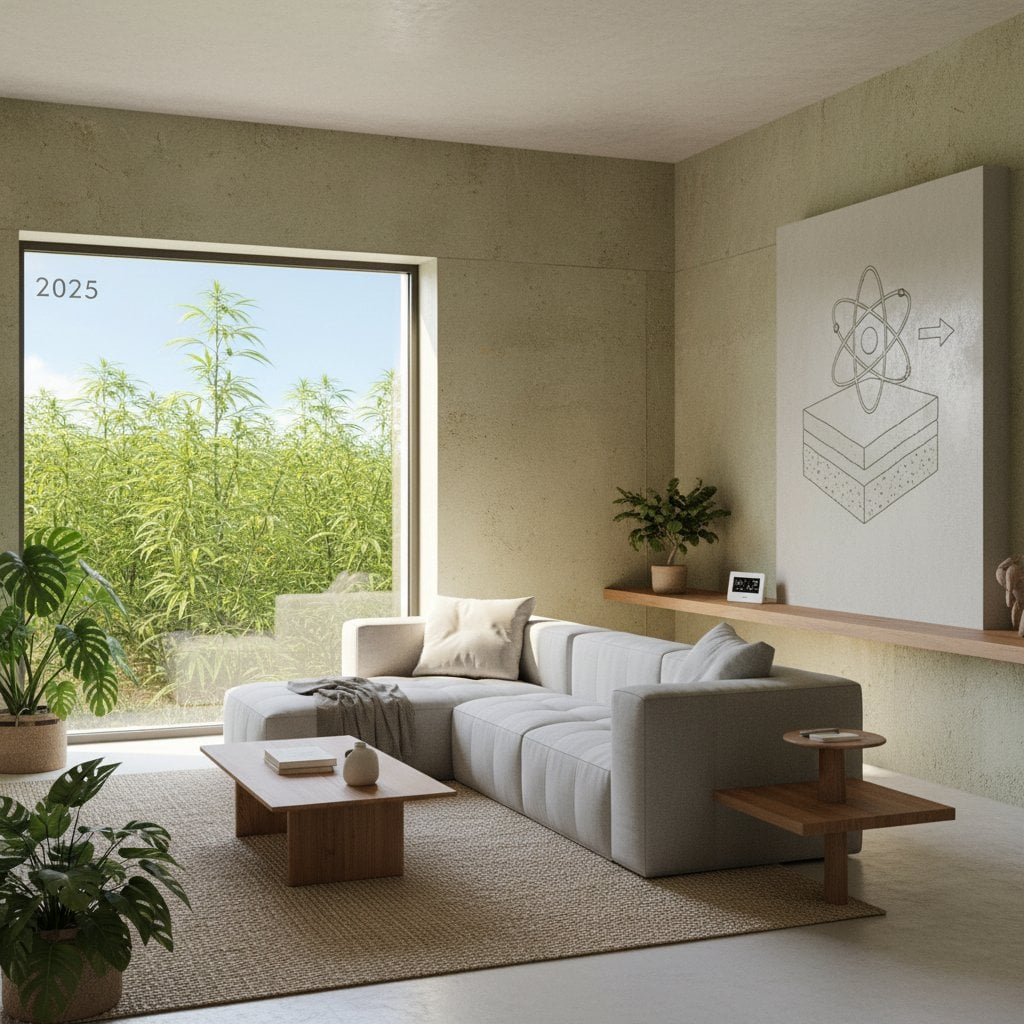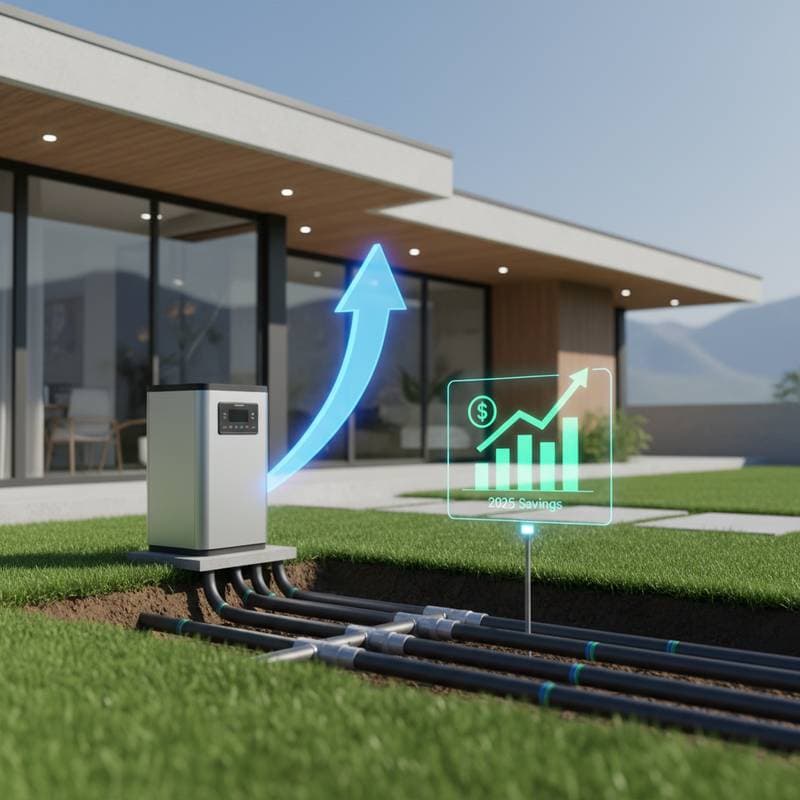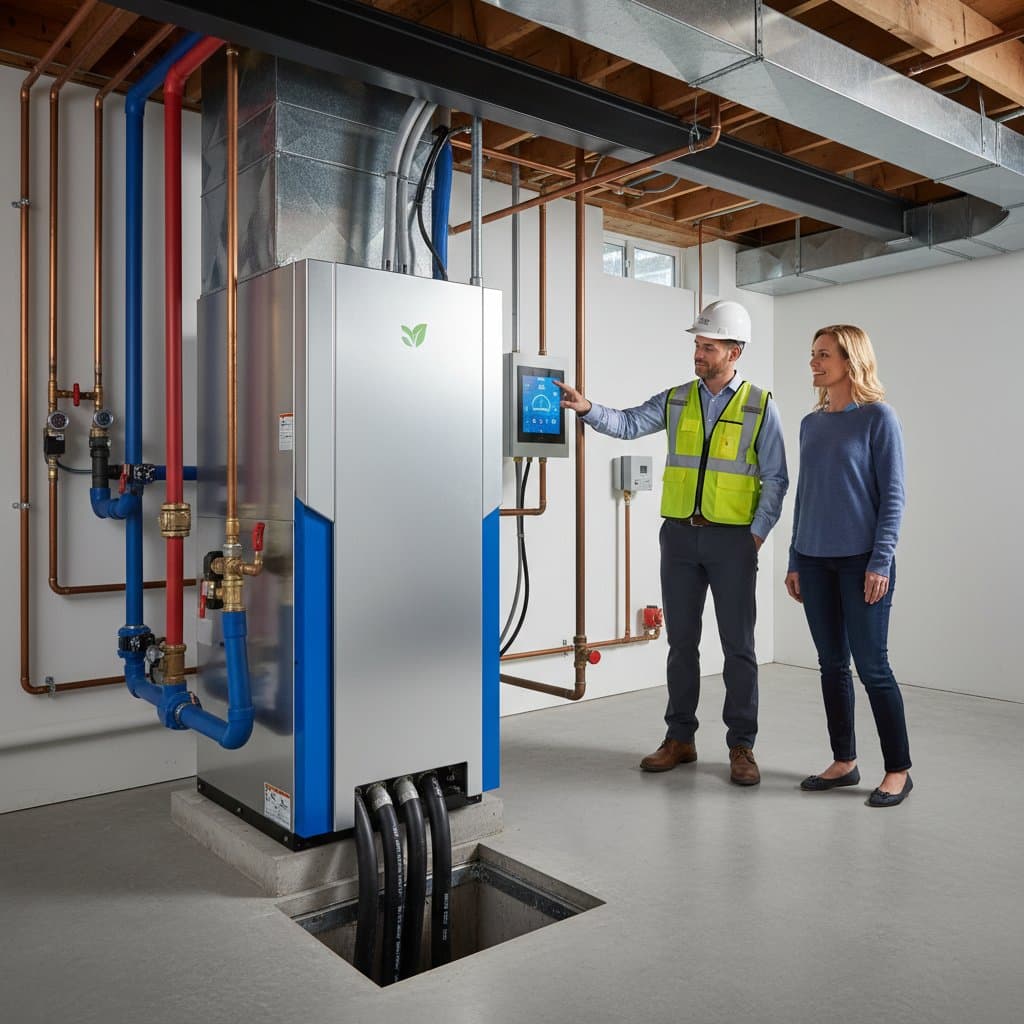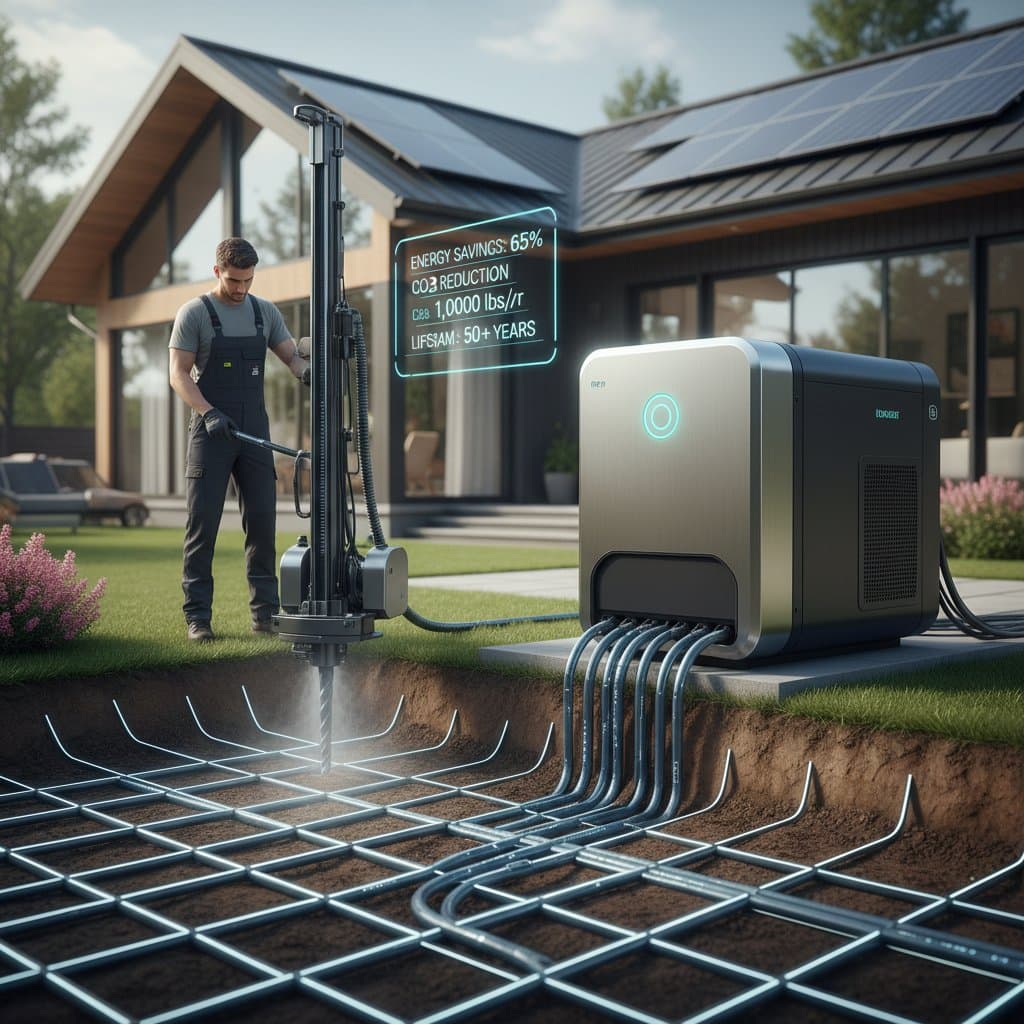Key Points
- Geothermal cooling systems can reduce summer energy bills by up to 60 percent when compared to conventional air conditioning units.
- These systems utilize ground-source heat pumps to access the stable temperatures found underground, providing consistent indoor comfort.
- Although initial installation expenses exceed those of traditional setups, substantial long-term energy savings and available incentives frequently justify the investment.
- Optimal performance depends on careful system design tailored to specific soil conditions and property features.
- Engaging certified professionals for installation guarantees adherence to safety standards, regulatory compliance, and peak operational efficiency.
A Fresh Take on Beating the Heat
As a professional in green building practices, I have observed numerous homeowners facing escalating utility expenses during peak summer periods. Traditional air conditioners frequently operate continuously, which burdens both household budgets and the broader electrical infrastructure. Imagine entering a residence where the atmosphere remains refreshingly cool and even, supported by a system that collaborates with the earth's natural thermal stability rather than opposing it. Geothermal cooling achieves precisely this outcome, fostering an environment that balances efficiency, occupant comfort, and environmental stewardship.
Homeowners often express frustration with the relentless heat that demands constant cooling efforts. In many cases, these efforts lead to discomfort when systems cycle on and off abruptly. Geothermal technology addresses these issues by maintaining steady temperatures, eliminating the extremes associated with conventional methods.
Why Traditional Cooling Struggles
Standard air conditioning units must contend with variable outdoor conditions, particularly in areas prone to high humidity or extended hot spells. This ongoing resistance to external heat significantly increases power demands, with cooling alone responsible for more than 50 percent of a typical home's summer electricity consumption in some regions. Escalating energy prices exacerbate these challenges, leaving many residents searching for viable alternatives. Ground-source heat pumps demonstrate that effective solutions exist beyond reliance on outdated approaches.
The inefficiency of traditional systems becomes evident during prolonged heat waves, where performance declines and maintenance needs rise. Homeowners may overlook the cumulative impact on their finances and the environment. Shifting to geothermal options provides a pathway to mitigate these drawbacks while enhancing overall living quality.
The Geothermal Advantage
Geothermal systems differ fundamentally from air-source alternatives by leveraging the earth's relatively constant subsurface temperatures, typically located just a few feet below the surface. This reliable thermal reservoir enables the equipment to operate with markedly reduced energy input. Data from the U.S. Environmental Protection Agency indicates that such systems achieve energy reductions of 40 to 60 percent relative to conventional heating, ventilating, and air conditioning configurations. Consequently, households experience tangible reductions in monthly expenses alongside a diminished environmental impact.
The stability of underground conditions ensures that geothermal setups perform consistently across seasons, extending beyond summer cooling to include efficient heating in winter. This dual functionality amplifies the value proposition for long-term homeowners. By integrating seamlessly with existing home infrastructures, these systems promote sustainability without compromising on reliability.
Expert Tips to Boost Your Home’s Eco-Efficiency
1. Understand the System Basics
Geothermal systems comprise three primary components that work in unison to manage indoor climate. The ground loop consists of buried pipes through which a fluid circulates to transfer heat with the surrounding soil. The heat pump serves as the core unit, extracting excess warmth from the home during summer and reversing the process to introduce heat in colder months. The distribution system then channels the conditioned air via standard ductwork throughout the living spaces.
This configuration forms a self-sustaining thermal exchange network, positioning the earth as a dependable source of energy regulation. Familiarizing yourself with these elements aids in appreciating the technology's simplicity and effectiveness. Proper comprehension also facilitates informed discussions with installation specialists.
2. Evaluate Site Conditions
Suitability for geothermal installation varies by property characteristics, including soil composition, available space, and water table depth. Conduct a thorough site assessment to identify the most appropriate loop configuration. Horizontal loops require expansive yard areas for shallow burial, while vertical loops suit properties with limited surface space through deeper drilling.
Soil conductivity plays a pivotal role in heat transfer efficiency; sandy or loamy soils often outperform clay-heavy types. Professionals use specialized tools to analyze these factors, ensuring the design aligns with local geology. Addressing site-specific challenges early prevents costly adjustments later.
3. Factor in Costs and Incentives
For an average-sized residence, geothermal installation expenses range from $18,000 to $30,000, influenced by the chosen loop type, system capacity, and regional labor rates. These figures may appear daunting initially, yet federal tax credits, state rebates, and utility programs can reduce the net cost by 30 percent or more. Energy savings typically recoup the investment within 5 to 10 years, depending on local electricity rates and usage patterns.
Beyond direct financial returns, consider indirect benefits such as reduced maintenance outlays over time. Research current incentive programs through government resources or energy agencies to maximize affordability. A detailed cost-benefit analysis, prepared by a consultant, clarifies the path to profitability.
4. Plan for Longevity
Geothermal installations boast exceptional durability, with ground loops enduring beyond 50 years under normal conditions. The heat pump components generally operate reliably for 20 to 25 years, often outlasting traditional units by a significant margin. This extended service life underscores the wisdom of viewing the system as a enduring asset rather than a short-term expense.
Regular upkeep preserves this longevity, focusing on fluid levels, filter replacements, and periodic inspections. Selecting high-quality materials during installation further safeguards performance. Homeowners who prioritize these aspects enjoy sustained efficiency across generations.
5. Choose Professional Installation
Geothermal projects demand expertise in excavation, drilling, and precise system integration, rendering self-installation impractical and potentially hazardous. Licensed contractors versed in local geotechnical properties and regulatory requirements ensure flawless execution. Verify credentials through industry associations and seek references from prior clients to select a trustworthy team.
Professional oversight minimizes risks such as improper loop placement or electrical faults. Post-installation calibration fine-tunes the system for optimal output, aligning with your home's specific needs. Investing in skilled labor yields peace of mind and superior results.
Practical Considerations
Geothermal cooling delivers 40 to 60 percent reductions in summer energy expenditures, varying by climate and home size. Maintenance involves straightforward annual inspections by technicians, far less intensive than servicing conventional air conditioners. Such systems enhance property attractiveness in markets valuing green features, potentially boosting resale values by several thousand dollars.
Users benefit from uniform comfort levels, as the steady operation avoids the temperature swings common with cycling units. Dr. Karen Smith, a renewable systems engineer, stated, “Geothermal cooling represents one of the most effective methods to achieve stable indoor environments while substantially lowering reliance on fossil fuel-based energy sources.” These advantages extend to quieter operation and improved air quality through advanced filtration integration.
Steps to Implement Geothermal Cooling
Begin the process with a comprehensive energy audit to baseline your current consumption and pinpoint inefficiencies. Consult multiple certified geothermal specialists to obtain tailored proposals that account for your site's unique attributes. Review financing options, including loans designed for renewable upgrades, to ease upfront commitments.
During installation, monitor progress to confirm adherence to the agreed plan, and prepare your household for temporary disruptions. Once operational, track monthly bills to verify savings and adjust habits for even greater efficiency. This structured approach transforms your home into a model of sustainable comfort, yielding financial relief and environmental contributions for years ahead.










